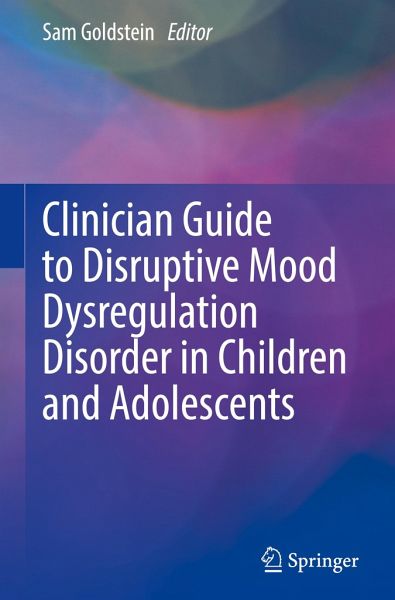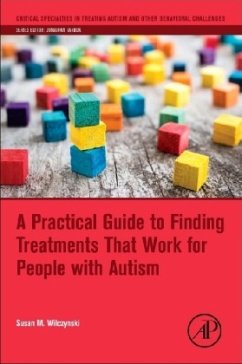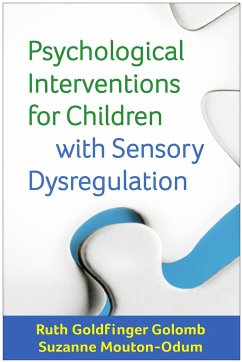
Clinician Guide to Disruptive Mood Dysregulation Disorder in Children and Adolescents

PAYBACK Punkte
76 °P sammeln!
This book examines disruptive mood dysregulation disorder (DMDD) during childhood and adolescence. It explores the ways in which explosive anger outbursts and persistent irritability are among the most problematic symptoms in child and adolescent mental health. and may present as a feature of many different psychiatric illnesses. The volume addresses the myriad challenges that youth with a focus on the DMDD diagnosis experience. Chapters focus on key issues of development, behavior, achievement, social relations, and mood. The book describes how to diagnose and conduct clinical assessments of ...
This book examines disruptive mood dysregulation disorder (DMDD) during childhood and adolescence. It explores the ways in which explosive anger outbursts and persistent irritability are among the most problematic symptoms in child and adolescent mental health. and may present as a feature of many different psychiatric illnesses. The volume addresses the myriad challenges that youth with a focus on the DMDD diagnosis experience. Chapters focus on key issues of development, behavior, achievement, social relations, and mood. The book describes how to diagnose and conduct clinical assessments of child and adolescent personality and behavior with suspected DMDD.
Key areas of coverage include:
Comprehensive history of mood dysregulation research and current trends in psychiatric classification (e.g., DSM-5, Research Domain Criteria) and their influence on the clinical assessment of children and adolescents with suspected DMDD.Updates of professional standards to guide clinicians and diagnosticians and discussions of practical considerations in planning and conducting clinical assessments for children with DMDD.Reviews the most recent editions of questionnaires and tests used in the clinical assessment of child and adolescents with suspected DMDD.Differential diagnosis and practical methods for integrating assessment information to develop an effective, multidisciplinary treatment plan.Review of current trends in psychiatric and psychological treatment of DMDD.
Clinician Guide to Disruptive Mood Dysregulation Disorder in Children and Adolescents serves as an essential resource for researchers, professors, and graduate students as well as veteran and early-career clinicians and professionals across such interrelated disciplines as school, clinical child, developmental, and educational psychology, child and adolescent psychiatry, school counseling, social work, and public health.
Key areas of coverage include:
Comprehensive history of mood dysregulation research and current trends in psychiatric classification (e.g., DSM-5, Research Domain Criteria) and their influence on the clinical assessment of children and adolescents with suspected DMDD.Updates of professional standards to guide clinicians and diagnosticians and discussions of practical considerations in planning and conducting clinical assessments for children with DMDD.Reviews the most recent editions of questionnaires and tests used in the clinical assessment of child and adolescents with suspected DMDD.Differential diagnosis and practical methods for integrating assessment information to develop an effective, multidisciplinary treatment plan.Review of current trends in psychiatric and psychological treatment of DMDD.
Clinician Guide to Disruptive Mood Dysregulation Disorder in Children and Adolescents serves as an essential resource for researchers, professors, and graduate students as well as veteran and early-career clinicians and professionals across such interrelated disciplines as school, clinical child, developmental, and educational psychology, child and adolescent psychiatry, school counseling, social work, and public health.














